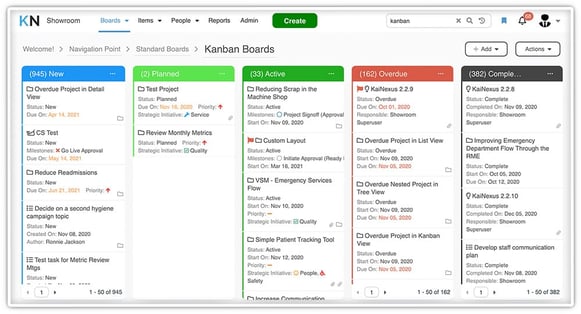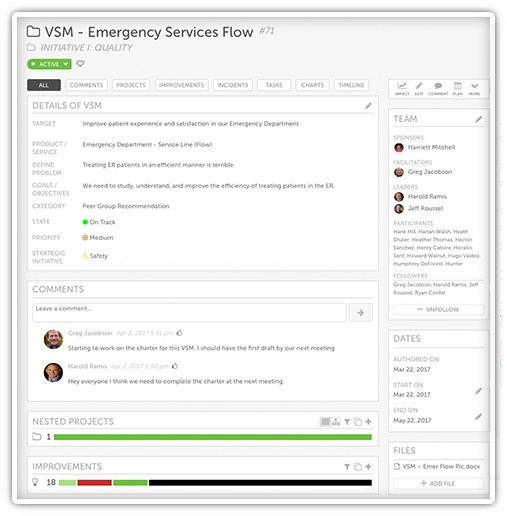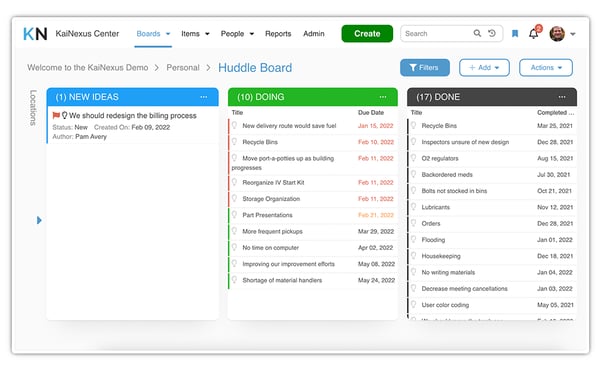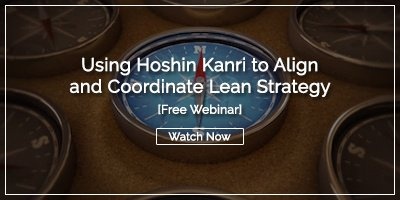 Organizations that adopt the Lean approach to business management have many tools and techniques to leverage. That’s one of the most appealing aspects of the methodology, you simply select the right tool for the job and get about the process of problem-solving in a very controlled, and repeatable manner. Software supports many Lean tools in various ways and creates a unified platform for all types of improvement work.
Organizations that adopt the Lean approach to business management have many tools and techniques to leverage. That’s one of the most appealing aspects of the methodology, you simply select the right tool for the job and get about the process of problem-solving in a very controlled, and repeatable manner. Software supports many Lean tools in various ways and creates a unified platform for all types of improvement work.
Here are some of the most popular.
Catchball
The Lean technique of catchball involves moving ideas and information from one person or team to another, much like catch from childhood but with opportunities for improvement, rather than balls. It forms the basis for complicated decision making and policy development. Email is a dangerous place for catchball because it is so easy for messages to be missed and context to be lost. Lean management software, on the other hand, is an ideal tool for this kind of back and forth collaboration.
Daily Huddles
Daily huddles are a fairly ubiquitous practice in Lean organizations. Teams gather around a huddle board to discuss projects and help solve problems. A Lean software platform digitizes the huddle board, making it possible for people to participate from anywhere, capturing the history of improvement, and helping executives stay connected to the improvement work of all the teams they oversee.
DMAIC and PDSA
DMAIC (Define, Measure, Analyze, Improve, Control) and PDSA (Plan, Do, Study, Act) are variations of the cycle for continuous improvement. Each is designed to ensure orderly and effective change. Software is used to document each step of the cycle, notify team members when action is required, and measure the impact of the improvement.
Gemba Walks
The purpose of a Gemba walk is to visit the place where work actually happens and identify opportunities for improvement. The improvements are never made during the walk, only after the walk is over, and the proper analysis occurs. Improvement software becomes the home for each potential change that is identified. It guides the process for those opportunities that have been selected for implementation.
Hoshin Kanri
Hoshin Kanri is a strategy development approach that involves identifying a few breakthrough objectives that can be achieved in 3-5 years. Software supports the Lean planning tool by aligning each person’s goals with the overall strategy in the tool that they use for daily improvement work. This keeps the strategy top of mind.
Kanban
Kanban is a technique used in Lean to help visualize workflow and find any interruptions in flow before a backlog forms or grows too big. Digital Kanban boards help make it visible where work is getting delayed. With this easy insight, managers are better able to take the proper steps to solve any problems.

Kaizen Events
Lean improvement software helps ensure success by providing a unified platform for all work that will take place. Relevant documents can be stored, tasks can be assigned, and progress can be measured all in one online location. The best solutions provide notifications and alerts that help maintain momentum and provide a structure for collaboration. This is especially important if the problem being addressed requires cross-functional effort. It is quite common for new opportunities for improvement to be discovered during a Kaizen event. Software helps capture them for future projects.
Standard Work
Improvement software is used to support Standard Work in several ways. The process of developing the Standard is tracked as an improvement, ensuring that all of the stakeholders are involved. It also serves as a repository for the current Standard. When the Standard needs revision, the cycle begins again.
Value Stream Mapping
The goal of value stream mapping is to compare the current state to a perfect state in which value is maximized, and waste is eliminated. It is important to consider value stream mapping software with that goal in mind. Software that simply digitizes the map, does little to support the underlying purpose of improvement. Instead, the focus should be placed on features that are designed to document, accelerate, and capture the results of opportunities for improvement.

These Lean tools can help any organization bring consistency and efficiency to improvement efforts. They are even more powerful when cloud-based software is used to support them. It makes sense to set your organization up for success by evaluating the available solutions.





Add a Comment